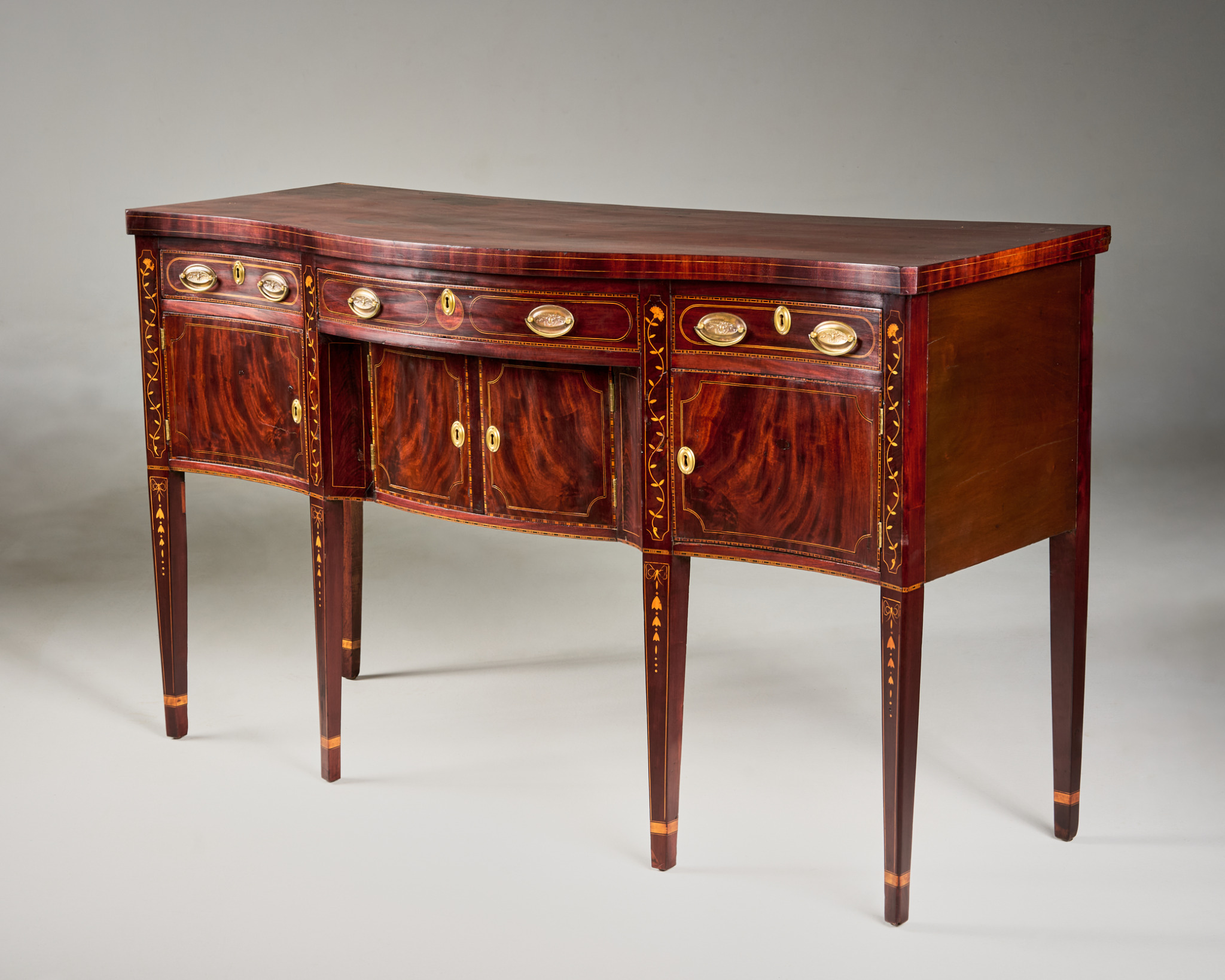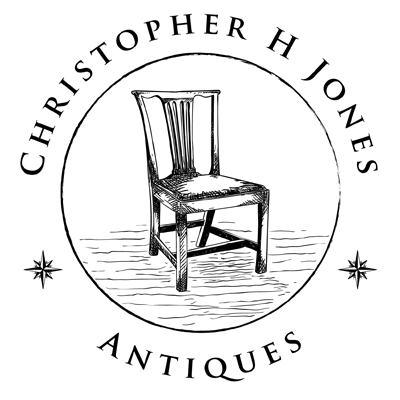Sideboard
Mahogany and mahogany veneers
yellow pine, poplar secondary woods, light wood inlays
Northern Valley of Virginia, probably Winchester
C. 1800
41″ H 16.50″ D 68″ W
This serpentine front sideboard is a fine regional interpretation of a new furniture form just finding its way into homes in Virginia, Maryland and the Carolinas at the end of the 18th century. This specialized form, replacing the sideboard table, was introduced in England by the furniture designer George Hepplewhite who noted in 1794 that “the great utility of this piece of furniture has procured it a very general reception, and the conveniencies it affords render a dining-room incomplete without a sideboard.” [i] They were often used as the focal point of dining rooms and were frequently utilized in the display of the owners’ wealth and status; as evidenced by his silver plate, fine glass and ceramics.
The profuse and diverse inlays include complex bows, bellflowers, vine and leaf, blossoms and complex multicolor string inlays. The inlays are used to great effect and are part of regional vocabulary. Related inlays are to be found on other sideboards and case pieces with histories in the greater Winchester area including Frederick and Shenandoah Counties. As a major commercial center in the 18th century Virginia interior, Winchester boasted multiple cabinet shops populated by cabinetmakers trained in or influenced by Baltimore, Philadelphia or other urban centers. Even so, these cabinetmakers developed a distinctive regional style that was adapted by artisans in the surrounding counties and eventually spread down the Valley of Virginia and into Tennessee.
The sideboard retains its structural integrity, height and form. Its overall condition is commensurate with age and use. Some edge stringing has been replaced and the hardware is largely restored. The degraded varnish surface was restored by the FC Vogt Company of Richmond.
[i] Hurst, Ronald, and Prown, Jonathan, Southern Furniture, 1680-1830, Williamsburg, Va., The Colonial Williamsburg Foundation, 1997, page 513.


